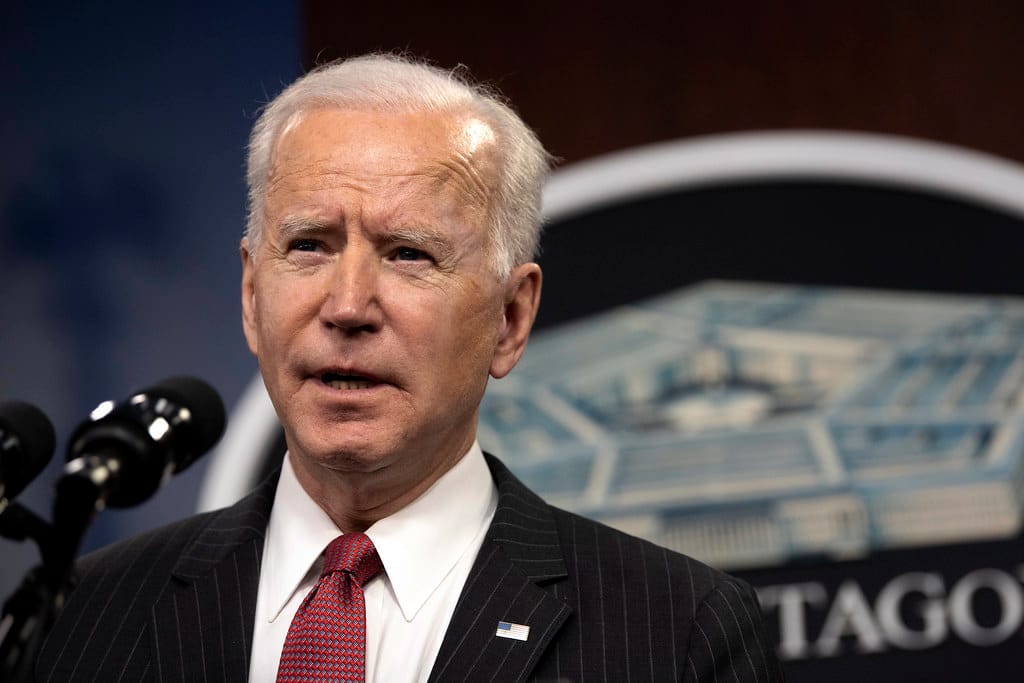
Spectrum
The implementation plan aims to bolster the U.S. spectrum workforce to support future wireless policy and innovation.

 Photo of President Joe Biden by Lisa Ferdinando from the Defense Department
Photo of President Joe Biden by Lisa Ferdinando from the Defense Department
WASHINGTON, March 12, 2024 – A plan laying out the implementation of the National Spectrum Strategy was unveiled Tuesday by the National Telecommunications and Information Administration.
This implementation plan includes timelines and the relevant agencies tasked with conducting thorough evaluations of the 2,786 megahertz of spectrum identified in the national spectrum strategy for potential new uses by private and public sectors soon.

The plan is designed to secure the United States’ digital future through four pillars.
First, it aims to secure adequate spectrum for emerging services like 6G and Wi-Fi 7, while mitigating disruptions to federal operations.
Second, it establishes a stakeholder-driven process to cultivate a sustainable long-term spectrum pipeline.
Third, the plan fosters research and development into cutting-edge spectrum technologies, such as dynamic spectrum sharing.
Finally, the plan aims to bolster the U.S. spectrum workforce to support the burgeoning wireless economy.
Work on spectrum band studies is slated to commence this year, with the first of the technical assessments on 37-37.6 GigaHertz anticipated to be complete by November 2024.
Evaluation is specifically earmarked for several bands, including the lower 3 GHz band, 5030-5091 MegaHertz, 7125-8400 MHz, 18.1-18.6 GHz, and 37-37.6 GHz.
Among its objectives, the plan aims to address the feasibility of repacking, compressing, and relocating airborne radars and other federal systems in the lower 3 GHz band to facilitate commercial use. The impetus behind the push for reallocation stems from increasing demand within the private sector for mid-band spectrum, which is particularly suited for 5G deployment.
Currently, the Defense Department operates as the incumbent in the 3 GHz band. In December, the agency produced a study that found sharing in the band to not be feasible, without jeopardizing national security. The NTIA has committed to continuing to study opening the 3 GHz band for commercial operations over the next two years.
Outlined below are the projected timelines for the commencement and conclusion of studies for specific spectrum bands:
Screenshot taken from the NTIA’s website.
Final reports and recommendations will be made publicly available on an ongoing basis, according to the timeline outlined by the NTIA.
Harold Feld, senior vice president of Public Knowledge, a nonprofit that promotes an open internet and access to affordable communications tools, welcomed the implementation plan for its pragmatic approach, emphasizing its commitment to tangible outcomes rather than mere rhetoric.
He particularly praised the Joe Biden administration’s dedication to expanding and diversifying the spectrum workforce, recognizing the critical role it plays in advancing next-generation networks and ensuring inclusive opportunities for all individuals, including those historically underrepresented in the sector.
“Lack of engineers, tower climbers, and other specialized workers needed to build out wireless networks delays deployment of next-generation networks and threatens our ability to continue to lead the world in wireless technologies,” stated Feld in a press release.
“This is the first administration to propose a federal strategy to address this growing problem, and we are pleased at the commitment to doing so in a way that expands opportunities for those traditionally excluded from these well-paying jobs.”
In a press release, INCOMPAS CEO Chip Pickering praised the NTIA’s implementation plan for its efforts to efficiently allocate and maximize the use of America’s limited spectrum resources.
Pickering highlighted the importance of exploring the potential for repacking and sharing in the lower 3 GHz band and applauded the expedited study timelines proposed for the 7 GHz and 37 GHz bands to facilitate unlicensed use.
He emphasized the need for complementary action from the Federal Communications Commission, particularly regarding the 12 GHz proceeding, to fully unlock the capabilities of mid-band spectrum for licensed terrestrial applications.



